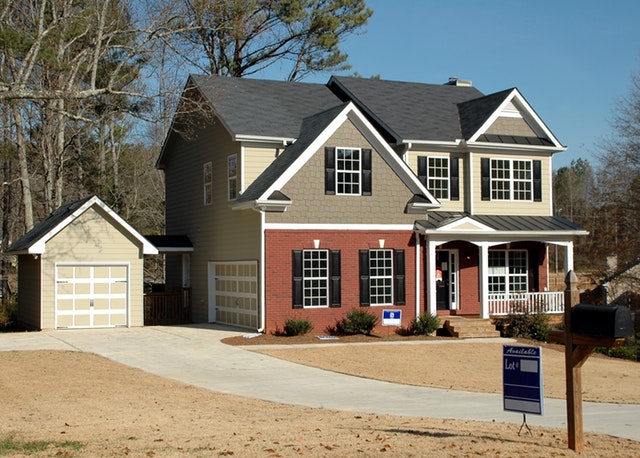 A growing supply of housing, volatility in the marketplace and risks in the development process all affected the multifamily market in 2018. In 2019, these three factors will continue to move the needle.
A growing supply of housing, volatility in the marketplace and risks in the development process all affected the multifamily market in 2018. In 2019, these three factors will continue to move the needle.
The Housing Supply
Markets like Boston, Seattle and Nashville are growing supply faster than demand. From 2015 to 2017, developers were building like crazy and landlords were enjoying rent increases of 5-7% year over year. They built too much, and the peak has showed itself. Only top markets like Atlanta and Charlotte can justify their cost of living increases. The rest will likely see slower growth and possibly losses in rent values and occupancy rates.
Market Volatility
Secondary markets are experiencing problems in their local economies, which is driving away the multifamily market. Fewer jobs means less security. Most multifamily clients are looking for stability, and they move into and out of markets based on that. Experts are predicting a consolidation of these families into larger markets.
Interest Rates
The volatility in the market has been accompanied by higher interest rates, which makes money harder to borrow. The seller’s market has held out for so long that a turnaround was almost inevitable, and most experts agree that the current trend is more than just a short term hiccup. We are looking at a real market correction.
The Effect
These three variables come together to create a multifamily market that is looking better for buyers than it has in a long time. Entrants into the market who have been waiting for a price dip began to see it in the latter part of 2018. All signs point to this price trend continuing into 2019.
Just as important as price is location. Although multifamily units will probably be in high supply in secondary markets, these units will be more difficult to fill. What you may see is a consolidation towards markets like Atlanta and Charlotte from multifamily buyers as well as renters.
You may also see speculators who choose to purchase in secondary markets and wait for a turnaround. In both cases, you can probably expect a more balanced overall landscape that will eventually stabilize into market values that are anywhere from 10 to 35% off peak.
Contact your trusted real estate professional to help you navigate the housing opportunities in 2019 for your local market.
 During its post-meeting statement, the Federal Open Market Committee of the Federal Reserve announced that its target range for the Fed’s key interest rate would increase one quarter percent to 2.25 to 2.50 percent. While this rate hike was not expected by the Executive branch, it met analyst expectations.
During its post-meeting statement, the Federal Open Market Committee of the Federal Reserve announced that its target range for the Fed’s key interest rate would increase one quarter percent to 2.25 to 2.50 percent. While this rate hike was not expected by the Executive branch, it met analyst expectations. Just like Fantasy Football players try to predict who will score the most touchdowns, pass for the most yardage and win the Super Bowl, people with an eye on the real estate market also engage in speculation. Like sports fans, expectations are often driven by statistics from the previous season.
Just like Fantasy Football players try to predict who will score the most touchdowns, pass for the most yardage and win the Super Bowl, people with an eye on the real estate market also engage in speculation. Like sports fans, expectations are often driven by statistics from the previous season. Home builder confidence in national housing market conditions rose one index point for a reading of 68 in October. Readings over 50 indicate that most builders are confident about market conditions. Rolling three-month averages showed mixed results. The Northeastern region gained three points for an index reading of 57; the Midwestern region lost two index points with a reading of 57 and the Southern region posted a gain of one point with a reading of 70. The Western region held steady at 74.
Home builder confidence in national housing market conditions rose one index point for a reading of 68 in October. Readings over 50 indicate that most builders are confident about market conditions. Rolling three-month averages showed mixed results. The Northeastern region gained three points for an index reading of 57; the Midwestern region lost two index points with a reading of 57 and the Southern region posted a gain of one point with a reading of 70. The Western region held steady at 74. The record-setting pace of the U.S. economy continues to positively impact the housing market and home foreclosures now stand at an astonishing 12-year low.
The record-setting pace of the U.S. economy continues to positively impact the housing market and home foreclosures now stand at an astonishing 12-year low. The struggle to achieve the American homeownership dream often feels like it happens in a vacuum. Everyday people work hard, save money and polish up their credit to get a low mortgage rate.
The struggle to achieve the American homeownership dream often feels like it happens in a vacuum. Everyday people work hard, save money and polish up their credit to get a low mortgage rate. Home price growth slowed to its lowest pace in nearly a year according to the Case-Shiller Home Price Indices. National home price growth averaged 6.00 percent year-over-year as compared to 6.20 percent growth in June.
Home price growth slowed to its lowest pace in nearly a year according to the Case-Shiller Home Price Indices. National home price growth averaged 6.00 percent year-over-year as compared to 6.20 percent growth in June. A young long-haul trucker driver once took an elder’s advice and invested all of his money into real estate. Even though he was seldom at home to enjoy the fruits of his labor, he hired a property management company to handle the properties. The advice that stuck with the driver was simple. “They’re not making any more of it, land that is.”
A young long-haul trucker driver once took an elder’s advice and invested all of his money into real estate. Even though he was seldom at home to enjoy the fruits of his labor, he hired a property management company to handle the properties. The advice that stuck with the driver was simple. “They’re not making any more of it, land that is.” The Federal Open Market Committee of the Federal Reserve announced that it raised the target federal funds rate to a range of 2.00 percent to 2.25 percent. This was the third consecutive increase in the Fed’s key interest rate and was the eighth time the Fed raised its key interest rate since 2015.
The Federal Open Market Committee of the Federal Reserve announced that it raised the target federal funds rate to a range of 2.00 percent to 2.25 percent. This was the third consecutive increase in the Fed’s key interest rate and was the eighth time the Fed raised its key interest rate since 2015. Home builder confidence in housing market conditions stayed flat in September. The National Association of Home Builders Housing Market Index reported an index reading of 67, which matched expectations and NAHB’s housing market reading for August. Analysts cited recent tariffs on building materials as a significant cause of easing builder confidence.
Home builder confidence in housing market conditions stayed flat in September. The National Association of Home Builders Housing Market Index reported an index reading of 67, which matched expectations and NAHB’s housing market reading for August. Analysts cited recent tariffs on building materials as a significant cause of easing builder confidence.